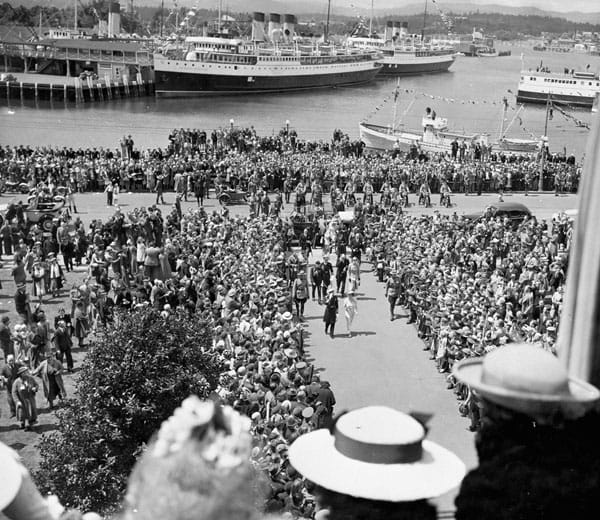A Royal Tour
Sir Joseph Banks and the Royal Society: Expanding the Horizons of Science and Exploration

In the late 1700s, Sir Joseph Banks, an affluent English aristocrat and botanist, became one of London's leading figures in the pursuit of science and exploration. Born into wealth and status, Banks could have enjoyed a comfortable life in England’s social elite, yet he devoted himself to science, especially botany, and became one of the most respected naturalists of his time.
Banks's journey began in earnest when he joined Captain James Cook's first voyage to the Pacific on the HMS Endeavour in 1768. Despite the grueling conditions and long months at sea, Banks was fascinated by the unknown territories, collecting thousands of plant and animal species previously unknown to Europeans. His efforts led to the discovery of plants like the bougainvillea and the breadfruit, specimens that would later reshape botanical science.
Upon his return to London, Banks used his wealth to fund the scientific endeavors of others. As President of the Royal Society, Banks was instrumental in advancing scientific knowledge in Britain and helped secure funding for countless explorers, expanding the British Empire’s reach and understanding of the natural world.
Banks's legacy endures, with his impact seen in the establishment of botanical gardens worldwide and the naming of numerous plant species in his honor. This devotion to knowledge and exploration made Banks a respected figure, not just in Britain but around the world, embodying the era’s spirit of enlightenment and discovery among London's elite.
A Story of Craftsmanship: Highclere Castle Gin

Highclere Castle Gin, crafted on the famous estate of the real 'Downton Abbey', is produced with a commitment to quality and heritage, reflecting the estate's long-standing agricultural traditions. Here’s a breakdown of the key steps and ingredients involved in its production:
Botanicals Selection
- The gin’s recipe includes botanicals sourced directly from the Highclere estate, some of which have been grown there for centuries. Key botanicals include:
- Juniper: Traditional and a core element of gin.
- Lime Flower: Sourced from Highclere’s 9th-century gardens.
- Oats: A unique addition from the estate, lending a creamy texture.
- Lavender: Historically used in the castle’s herb gardens.
- Other botanicals, like orange peel and angelica root, complement and balance the flavors.
Distillation Process
- Highclere Castle Gin is distilled in England at Langley Distillery, one of the oldest distilleries in the country.
- The botanicals are steeped in grain spirit to release their essential oils and flavors.
- The mixture is then distilled in traditional copper pot stills, which help produce a smoother, refined spirit with depth of flavor.
- The addition of oats during distillation is unusual for gin, but it imparts a silky mouthfeel, enhancing the gin’s smoothness and character.
Blending and Bottling
- The gin is carefully blended to ensure each batch achieves a smooth balance with bright citrus notes, a floral aroma, and a creamy finish.
- It’s bottled in distinctive purple bottles as a nod to the estate’s lavender fields and noble heritage.
Quality Assurance
- The team performs quality checks to maintain consistency, with each batch adhering to Highclere’s exacting standards.
Highclere Castle Gin combines tradition, estate-grown ingredients, and meticulous distillation to capture the essence of the English countryside in every bottle.
This Week in History: The Royal Tour that Shaped a Future Queen

On October 21, 1947, a young Princess Elizabeth and her new husband, Prince Philip, embarked on a journey that would shape the future of the British monarchy. Freshly engaged to be married, the princess undertook her first official royal tour to Canada, a monumental trip that introduced her to the vast lands of the Commonwealth and foreshadowed her lifelong dedication to duty.
A New Era Begins
In a post-war world, this tour marked a shift in both British and Canadian history. For Canadians, the visit symbolized renewed hope and unity within the Commonwealth. For Britain, it was a moment to reaffirm ties with its close ally across the Atlantic. But most of all, the tour was the young princess’s grand introduction to the world as the future queen.
Elizabeth, just 21 years old, had already shown qualities of maturity and resilience—traits she would soon need in abundance as the nation looked to her to carry forward the legacy of her father, King George VI. Accompanied by Prince Philip, who had served in the Royal Navy during World War II, Elizabeth was stepping into her new life with a sense of adventure and optimism. The tour would become a defining moment, one that demonstrated her strong character and solidified her connection to the people of Canada.
A Warm Canadian Welcome
The royal couple was welcomed in Ottawa with cheers from thousands of adoring Canadians. From there, they embarked on a whirlwind journey across the country, traveling over 10,000 miles in just 33 days. The sheer distance and variety of engagements were unprecedented, as the couple moved from the bustling streets of Toronto to the breathtaking landscapes of British Columbia.

Throughout the trip, Elizabeth demonstrated her natural ability to connect with people of all ages and backgrounds. She charmed the crowds with her warm smiles and humble demeanor, endearing herself to Canadians who were eager to see the princess in person. Her strong sense of duty and presence in every engagement left a lasting impression on Canadians, who would later come to view her as their beloved queen.
Canada’s Deepening Bond with the Crown
During the tour, Princess Elizabeth and Prince Philip attended events that showcased Canadian culture, met Indigenous leaders, and witnessed the unique beauty of Canada’s national parks. Every appearance seemed to strengthen the bond between Canada and the Crown, marking the beginning of a long and respectful relationship that Elizabeth would uphold throughout her life.
One of the highlights was their visit to Niagara Falls, where the princess, visibly moved, gazed at the powerful torrents with awe. It was a scene that captured both the majesty of Canada and the humility of a young royal who, despite her title, was deeply grounded.
Foreshadowing a Life of Service
Elizabeth’s tour of Canada did more than introduce her to the vast landscapes of the Commonwealth; it marked her first taste of the unbreakable ties she would maintain with Canada throughout her life. Canada was the Commonwealth country she visited most often, making over 20 visits during her reign. She was an honorary commissioner of the Royal Canadian Mounted Police and kept a close relationship with Canadian prime ministers, even meeting 12 of them over her lifetime.
As they concluded their tour in Vancouver and prepared to return to England, Elizabeth and Philip left Canada with much more than memories. They carried with them the understanding that their royal duties extended beyond Britain, binding them to countries and people across the world. The tour left an undeniable imprint on Elizabeth, reinforcing her commitment to service and to her role as a unifying figure for all members of the Commonwealth.
A Legacy that Lives On
The 1947 tour of Canada was more than just a visit; it was a rite of passage for the young princess. From that moment on, Elizabeth would dedicate herself wholeheartedly to her royal duties, becoming not only a symbol of stability and continuity but also a cherished figure in Canada’s cultural heritage.
Reflecting on that tour in later years, Elizabeth recalled the warmth of the Canadian people and the breathtaking beauty of the landscapes she encountered. This tour, etched in history, set the stage for a future queen and demonstrated the power of a single journey to unite nations and forge a legacy that would endure for generations.
The Eighth Inc. c/o Historical Heritage
46 Plains Road
Essex, CT 06426
©2024 Historical Heritage | newsletter@historical-heritage.com | Privacy Policy
